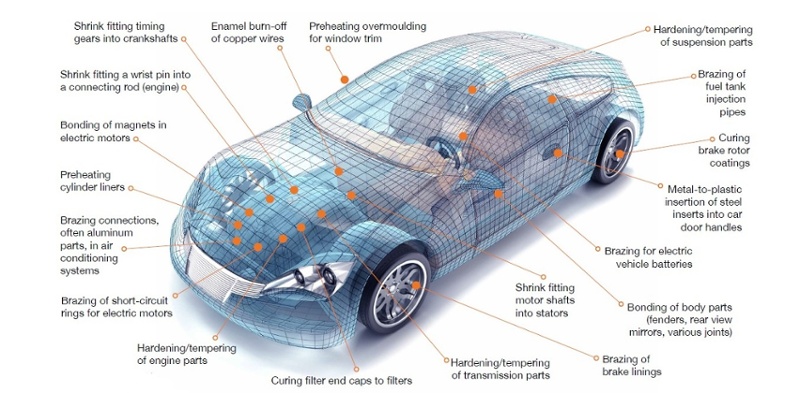Curing Material on an Aluminum Mandrel
Objective Heat a customer supplied aluminum cylinder to 80-120°C for a material curing application. More application notes
Processes
Processes: More
Processes: More

Industries:
Industries: More
Industries: More
Industries: More

Products:
Products: More
Services:
Services: More

Learn:
Learn: More
About:


Induction heating is an ideal process for high volume applications that demand repeatability. That is certainly the case in the automotive industry, and consequently, induction is readily utilized. First, let's cover the benefits of using induction heating for automotive applications:
Overall, induction heating is a versatile and efficient process that can be used for a variety of automotive manufacturing applications. Now, let's review some examples of how induction heating is used in automotive manufacturing:
These are just a few examples of how induction heating is used in automotive manufacturing. Our applications engineers have worked on countless automotive manufacturing applications involving induction heating, with the image above giving you a sense of the breadth of applications. Click on the image below to read some of their automotive manufacturing application notes.

Objective Heat a customer supplied aluminum cylinder to 80-120°C for a material curing application. More application notes

In today’s manufacturing landscape, efficiency, precision, and sustainability are critical. Induction heating—a process that uses electromagnetic...

When it comes to many manufacturing processes, including this forging application, precision and efficiency are critical. Traditional heating methods...